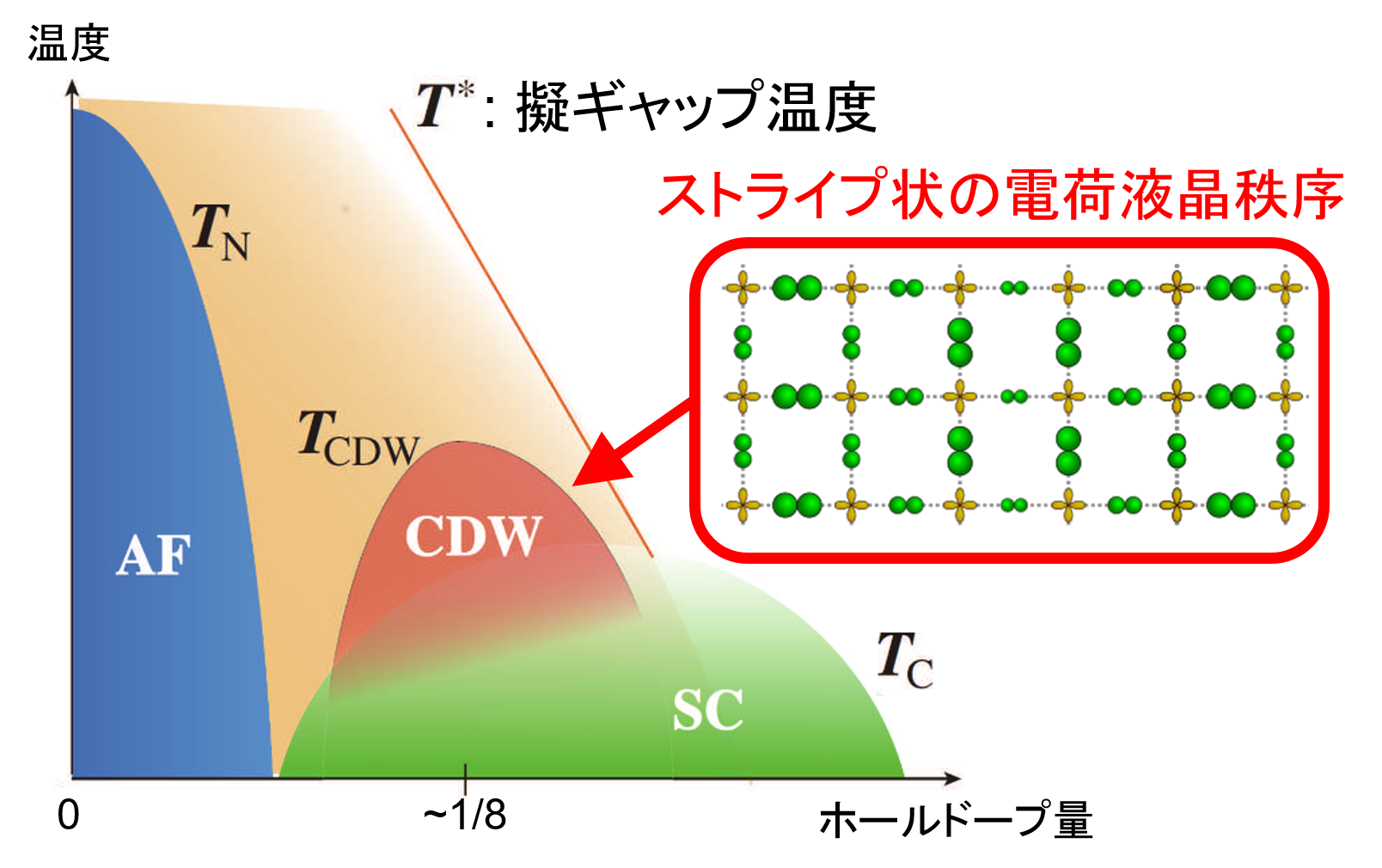Strongly Correlated Electrons
Quantum Liquid Crystal States in Cuprate Superconductors

Phase diagram of cuprate high-Tc superconductors
Cuprate high-Tc superconductors have been studied actively for over 30 years, after the discovery in 1986. In the last 10 years, both theoretical and experimental studies have been developed and attracted renewed interest. Especially, novel self-organization phenomena of correlated electrons, called the quantum liquid crystal states, have been studied intensively.
We attack this problem by focusing on the quantum interference between spin and change fluctuations, described by the Aslamazov-Larkin vertex corrections. Based on the fRG theory and the density-wave equation theory, we reveal that the strong bond-order is driven by strong spin fluctuations in the single-orbital Hubbard models [1-4]. (The bond order is the spontaneous modulation of hopping integrals due to electron correlations.) Experimentally observed axial charge-density-wave with wavevector q=(p,0) at TCDW (~200K) and the electronic nametic transition at the pseudogap temperature T* (~300K) are naturally explained as the double stage bond-order transition scenario proposed by the present theory [1-4]. In addition, resent theoretical study revealed that some exotic loop current orders can be realized by the Aslamazov-Larkin vertex corrections. The fluctuations of these rich quantum liquid crystal orders will mediate significant pairing interaction for high-Tc state at optimally doping, in collaboration with the magnetic fluctuations [1-4].
[1] Y. Yamakawa and H. Kontani, Phys. Rev. Lett. 114, 257001 (2015).
[2] M. Tsuchiizu, Y. Yamakawa, and H. Kontani, Phys. Rev. B 93, 155148 (2016).
[3] K. Kawaguchi, Y. Yamakawa, M. Tsuchiizu, and H. Kontani, J. Phys. Soc. Jpn. 86, 063707 (2017).
[4] M. Tsuchiizu, K. Kawaguchi, Y. Yamakawa, and H. Kontani, Phys. Rev. B 97, 165131 (2018).
